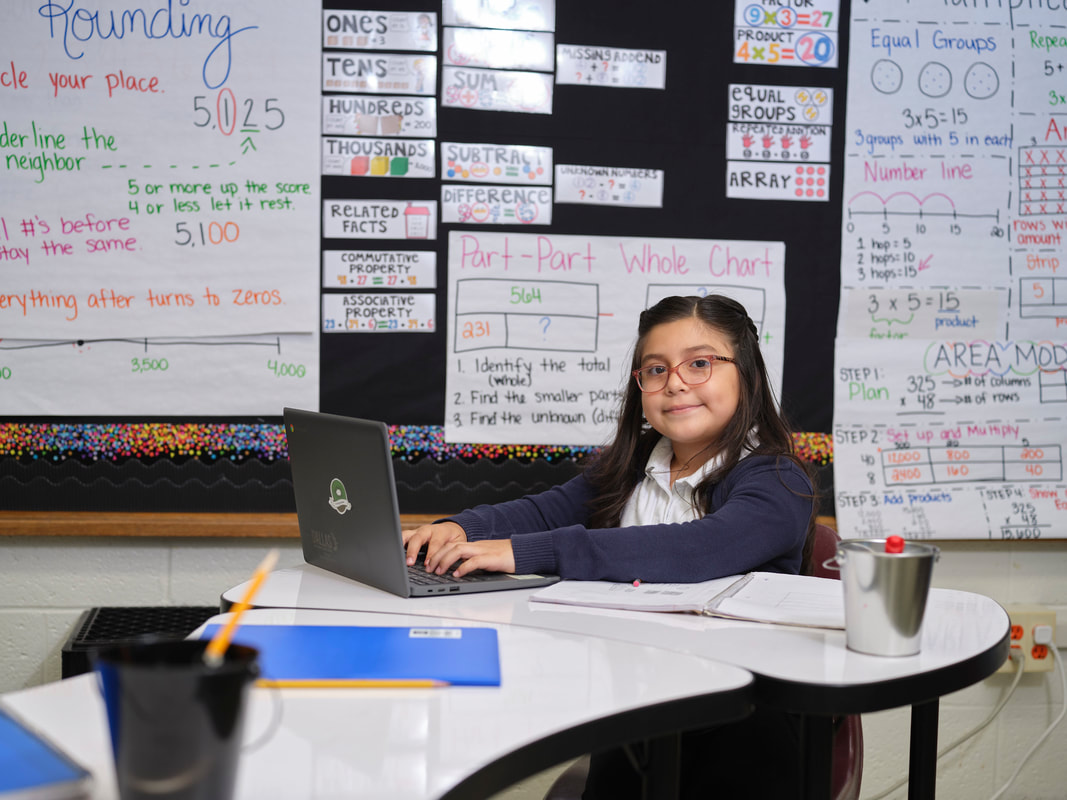Hybrid Learning for Families
What is Hybrid Learning?
|
Hybrid learning is an instructional approach that combines traditional face-to-face classroom instruction with online learning, and can incorporate components of blended learning. It is different from virtual learning because students usually attend in-person learning at school at least two days a week. While this approach was around before the COVID-19 pandemic, hybrid learning became much more common during the pandemic when school districts gave parents the choice of whether to have their children attend in-person or from home. However, this model is sticking around because it offers a variety of benefits to districts, teachers, students, and parents (Screencastify, 2022).
|
Hybrid learning allows teachers and learners to determine the pace and place for how students learn best. Many times students complete the majority of their coursework online and attend school for 1:1 tutoring sessions and collaborative group tasks with peers. Hybrid learning has been shown to increase learner engagement because it allows teachers to focus on the learning rather than the grade. By engaging students in hybrid learning, teachers are able to leverage technology tools as another way to collect data and personalize learning for their students (Hesse, 2017).
Opportunities + Challenges for Hybrid Learning
There are several challenges and opportunities to hybrid learning. Fortunately, the challenges can be overcome when families, teachers, and students partner in learning.
There are several challenges and opportunities to hybrid learning. Fortunately, the challenges can be overcome when families, teachers, and students partner in learning.
OpportunitiesTime to Focus on Learning
Students in a hybrid learning environment receive individualized attention and work at their own pace, leading to greater understanding and engagement with the material. Flexibility for Teachers Teachers can plan lessons and assess student learning in a variety of ways, both online and offline, allowing them to cater to the needs of their students in a more personalized way. Direct Access to Information With hybrid learning, both teachers and students have more direct access to information, which helps facilitate a deeper understanding of the material and provides more opportunities for collaboration. Able to Relearn Content If a student misses a class or lecture, they can easily watch it online at their convenience, which is not always possible in a traditional learning environment. |
ChallengesStudents Need Time Management Skills
Since students in a hybrid learning environment have more freedom and flexibility, they need to be able to manage their time well to succeed. If they do not, they may fall behind in their studies or become overwhelmed Lack of Internet Access can Impede Learning For hybrid learning to be effective, students need to have reliable access to the internet. Without it, they cannot participate in the online portion of their studies, which can impede learning Less Student Participation Hybrid learning requires students to be active in their education, but some may become disengaged, resulting in discouragement and a lack of participation. |
Adapted from Etcheberry (2022)
Tips for Student Success in an Online Environment
- Create a checklist to accomplish each day.
- Communicate with parents & teachers so they know your schedule and what to expect.
- Know when and how your teachers are available by phone, text, and email.
- Be timely on assignments and synchronous sessions. Plan ahead!
- Commit to asking for help and contact your teachers when you have questions.
References
Etcheberry, M. (2022, June 17). What is Hybrid Learning? Benefits and Tips for Teachers. Progress Learning Blog. Retrieved November 26, 2022, from
https://progresslearning.com/news-blog/what-is-hybrid-learning-benefits-and-tips-for-teachers/.
Florida Virtual School . (n.d.). Infographics about online learning. Infographics About Online Learning - FLVS Online Learning Community. Retrieved November 26, 2022, from https://www.flvs.net/infographics-about-online-learning.
Hesse, L. (2017). "The effects of blended learning on K-12th grade students". Graduate Research Papers. 116. Retrieved November 26, 2022, from
https://scholarworks.uni.edu/grp/116.
Screencastify. (n.d.). Hybrid teaching: Strategies and tips for K-12 Education. Retrieved November 26, 2022, from https://www.screencastify.com/blog/hybrid-teaching-strategies-and-tips-for-k-12-education.
Etcheberry, M. (2022, June 17). What is Hybrid Learning? Benefits and Tips for Teachers. Progress Learning Blog. Retrieved November 26, 2022, from
https://progresslearning.com/news-blog/what-is-hybrid-learning-benefits-and-tips-for-teachers/.
Florida Virtual School . (n.d.). Infographics about online learning. Infographics About Online Learning - FLVS Online Learning Community. Retrieved November 26, 2022, from https://www.flvs.net/infographics-about-online-learning.
Hesse, L. (2017). "The effects of blended learning on K-12th grade students". Graduate Research Papers. 116. Retrieved November 26, 2022, from
https://scholarworks.uni.edu/grp/116.
Screencastify. (n.d.). Hybrid teaching: Strategies and tips for K-12 Education. Retrieved November 26, 2022, from https://www.screencastify.com/blog/hybrid-teaching-strategies-and-tips-for-k-12-education.


